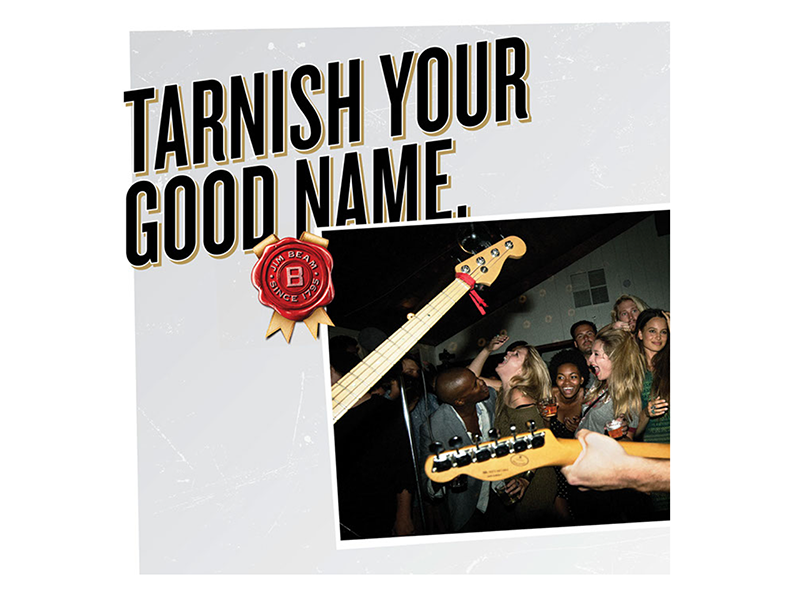In 1795, history was made when distiller Jacob Beam sold his first barrel of whiskey “Old Jake Beam Sour Mash” from the family distillery which was known as Old Tub. The company didn’t formally change its name to Jim Beam until 1943, named after Colonel James B. Beam, the fourth generation of the Beam family to take over the distillery.
Seven years later in 1802, a Frenchman named E.I. du Pont with an expertise in making gunpowder created Dupont.
Down in Louisville, Kentucky in 1815, Louisville Stoneware was formed and is one of the oldest stoneware manufacturers in the country. The company has been making stoneware products for the home and garden ever since. Today, visitors interested in seeing a behind-the-scenes look at the historic company – or those who just love pottery – can go see the company’s headquarters in the Paristown Point district of Louisville.
Shortly before the dawn of the 20th century, General Electric was founded through the 1892 merger of Edison General Electric Company of Schenectady, and the and Thomson-Houston Electric Company of Lynn, Massachusetts, with the support of Drexel, Morgan & Company.
So, what do Jim Beam, Dupont, Louisville Stoneware and GE have in common you might ask? All four of these companies over a hundred-year period symbolized the trend for corporate naming in the nineteen century – the creation of corporate brands that focused on three naming strategies: a) who created it, b) what we make or c) where we make it. Technically speaking, Louisville Stoneware is a hybrid name since it combines the ‘where we make it’ (Louisville) with the ‘what we do’ (Stoneware).
Two hundred years ago, one hundred years ago, or even fifty years ago, the world of business was far less sophisticated, hyperconnected and as ultracompetitive as it is today. Back then there were a lot less companies/brands/products and offerings without a fully formed advertising industry to promote brands to customers, corporations sought names that followed the eponymous or descriptive route.
Today, as we race through the nineteenth year of the twenty-first century a lot has changed.
A quick glance at Interbrand’s Best Global Brands league table published last week shows the dramatic contrast of the top corporate brands today versus those of yesteryear.
Apple with a brand value of $214B is a classic ‘associative’ name. The name was created by Steve Jobs four decades ago with the rationale for the name – officially – that it was based on Jobs’ desire to be (think?) different vs. computer companies like Digital and IBM but also for his fondness for apples and apple orchards. But the more likely reason for the Apple name was Jobs listening to his beloved Beatles records and watching the Apple records logo revolve on a turntable. Apple the company doesn’t make apples (i.e. the fruit) even though it does make and sell a lot of Macs – the iMac, the Mac Mini, the iMac Pro and the MacBook. The product brand name is inspired by the Mcintosh apple known for its bright red or green color and tart flavor.
Google in the number two spot on the 2018 Best Global Brands is an invented name inspired by the math term ‘googol’. For those people whose math skills topped out at pre-algebra, a ‘googol’
is 10 to the power 100. A really big number that supports the company’s original vision ‘to organize the world’s information’.
The name Amazon is inspired by the world’s biggest river – therefore the world’s biggest on-line bookstore and now pretty much seller of everything. Amazon the brand doesn’t physically exist on the banks of the Amazon river in Brazil although if it did, I’m sure UPS would find a way to pick up packages and deliver them within the prime 2 day window.
Only two brands in the Best Global Brands top ten are eponymous (named after their founder) ‘McDonalds’ and ‘Toyota’. McDonalds was founded by Maurice Mac and Richard McDonald in San Bernadino. Toyota was created by the Toyoda family but the ‘d’ was replaced with a ‘t’ because in Japanese script the word Toyota uses 8 strokes whereas Toyoda uses 10 strokes and 8 is considered a lucky number in Japanese culture.
The bigger headline today is that brands are getting smaller mostly due to the mobile age we’re living in. Internet brands like Uber, Nest, Twitter and JD (in China) symbolize this trend. Recent rebrands including WeightWatchers shift to WW and Dunkin losing the ‘Donuts’ are further symbols of this shift.
Even two hundred year old companies like Jim Beam are eschewing the old methods of naming. While the Jim Beam corporate name remains, a new whiskey brand ‘Devil’s Cut’ recently launched. After aging, when the bourbon is dumped out of the barrel, some liquid stays trapped deep inside the wood. This is the “Devil’s Cut”.
As Jim Beam puts it ‘we put our barrels through hell’.
In trying to find short, unique and distinctive business names it’s getting harder to find good ones that are available. Many business owners feel like those barrels in Jim Beam’s Devils Cut, too.
Interbrand’s Top 10 Best Global Brands in 2018
- Apple ($214bn)
- Google ($155bn)
- Amazon ($101bn)
- Microsoft ($93bn)
- Coca-Cola ($66bn)
- Samsung ($60bn)
- Toyota ($53bn)
- Mercedes-Benz ($49bn)
- Facebook ($45bn)
- McDonald’s ($43bn)
